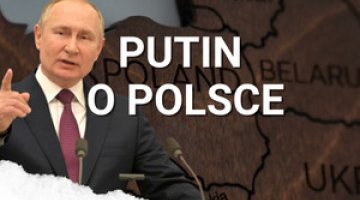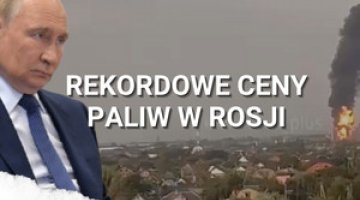Russia’s game of shadows around the INF
On 2 February, during a meeting with defence minister Sergei Shoigu and foreign minister Sergey Lavrov, President Vladimir Putin announced the decision to suspend Russia’s participation in the Intermediate-Range Nuclear Forces Treaty (INF), in response to a similar decision taken by the US on 1 February. At the same time Putin instructed the Defence Ministry to start R&D and engineering work on a land version of the medium-range sea-based Kalibr missiles, and on new land-based intermediate- and medium-range supersonic missiles. He also obliged the ministry not to increase its current expenditures from the state budget. Putin confirmed that Russian proposals for comprehensive negotiations (with the US and other Western countries) in terms of arms control and disarmament remain valid, but he forbade both ministers from initiating such discussions. At the same time, he declared that the new Russian intermediate- and medium-range missiles will not be deployed (either in Europe or other regions), as long as US missiles of similar parameters are not deployed either. On 5 February, minister Shoigu declared that a new missile based on the Kalibr would be developed by 2020.
Commentary
- This meeting, widely reported by the Kremlin and Russian media, was in fact a political show for the benefit of Western and Russian public opinion. Its aim was to create the following impressions: that the United States is responsible for tearing up the INF regime (Russia repeated its previous allegations that the US was responsible for violating the treaty); that Russia’s reaction was forced upon it, and is fully proportional; and that Moscow is nevertheless ready to make new agreements on arms control and disarmament. In the light of the bad public sentiment in Russia, caused by social problems, it was at the same time an attempt to convince the citizens that the country does not intend to enter into a costly new arms race.
- In fact, Russia had suggested since at least the mid-2000s that it could withdraw from the INF (such a threat was openly declared by the Chief of Staff of the Russian Armed Forces, Gen. Yuri Baluyevsky in February 2007, and by President Putin in October 2007, among others). Russia adopted this position in connection with the development of missile programmes by Asian countries (which were not bound by the treaty), while at the same time it treated the prospect of such a move as a bargaining chip in its attempts to block the construction of the US missile defence system in Europe. Back in 2007 Russia developed (and tested in 2008, thus violating the INF treaty) the new medium-range land-based 9M728 cruise missile (with an alleged range of at least 1500 km), based on the sea-based Kalibr missile systems (which were not prohibited by the INF). In the course of further development work, another land-based cruise missile, the 9M729, has been developed, and it has an alleged range of at least 2500 km. Both missiles have been adapted to fire from the modified Iskander mobile-platform systems (launching typically short-range ballistic missiles). According to information disclosed by US intelligence, two battalions of the new 9M729 missiles were put into service at the end of 2016 (one of them at an unspecified location in the European part of Russia), and two more in 2018. In this way, Russia has deepened the strategic imbalance in Europe, to NATO’s disadvantage.
- Russia rejected the allegations made by the US in 2013 that it had violated the INF, and did not respond to calls for a return to its observance. Russia itself blamed the United States for violating the system by constructing armed UAVs (which are not provided for in the treaty), using ballistic target missiles for missile defence exercises (which do not meet the definition of the missiles prohibited by the treaty), and installing land versions of the Mk-41 Vertical launch Systems for interceptor missiles in Europe, which can fire medium-range sea-based Tomahawk missiles (the launchers are able to do this if they have been appropriately adapted). Also, after the US announced on 20 October 2018 its intention to withdraw from the treaty, the meetings between Russia & the US (in Geneva on 15 January) and Russia & NATO (the NATO-Russia Council meeting on 25 January in Brussels) where this subject was discussed, ended in failure.
- The US’s formal decision on 1 February to suspend its participation in the INF treaty (which will come into force after six months) has had both negative and positive consequences for Russia. It opens the way for the US to limit the imbalance in favour of the Russian military which has arisen; it also makes it difficult for Russia to try and turn the INF into a bargaining chip, as part of its efforts to obtain a comprehensive arms control agreement which would take Russian demands into account. In particular, Moscow wants the US-Russia New Strategic Arms Reduction Treaty (New START, signed in 2010 and to be expired in February 2021) to be prolonged; to freeze or cancel the US-NATO missile defence system in Europe (the already existing Aegis Ashore base in Deveselu in Romania, and the similar base currently under construction in Redzikowo, Poland) as well as the similar American-Japanese system in Japan; to put restrictions on the development of conventional precision weapons by the US; and to receive guarantees on the demilitarisation of outer space. On the other hand, the US decision makes it easier for Russia to blame the United States for tearing up the INF treaty, and contributes to deepening tensions between the US and key Western European members of NATO, whose political elites are on the whole reluctant to take any further military measures to counter Russia.
- To a great extent, the Russian decisions announced on 2 February merely formalise the security situation in Europe which has existed for several years. This is because the new Russian missiles, in violation of the INF agreement, are already being deployed in some missile brigades on the European continent. Moreover, other Russian missile systems, which do not violate the INF treaty, and which can carry nuclear warheads – the Iskander-M systems (ballistic missiles with a range of at least 500 km), – have been deployed in Luga in the Leningrad oblast (since 2011), Krasnodar (since 2013) and in Chernyakhovsk in the Kaliningrad oblast (since 2018); also, Kalibr systems with a range of at least 1500 km have been deployed in 2016 on ships in the Baltic and Black Sea Fleets, which cover not only the states on NATO’s eastern flank, but also potentially the whole of Europe. Russia’s moves at present are mainly a form of psychological warfare targeted at the political elites and societies of the most important countries in Western Europe (especially Germany, France and Italy). The aim is to provoke fear of an ‘arms race’, i.e. the escalation of Russian-Western tensions and an increase in the nuclear threat. The aim is to incline the governments in these countries to oppose expected US initiatives regarding possible military responses to Russia, and to formulate ‘compromise’ initiatives which meet Russia’s demands in the security sphere. These would favour the deepening of trans-Atlantic and intra-European divisions, and could potentially weaken NATO. Russian pretences of a conciliatory attitude (declarations of being ready to hold talks, and refraining from deployment of their new missiles) have the same aim.
- In this way, Russia’s activities fit in with the classical policy of Putin’s Russia over the last decade: attempts to negotiate from a position of strength, and to create a fait accompli to force talks and concessions from the opposite side. This is reminiscent of Soviet policy of the late 1970s and 1980s. Russia – like the USSR – is not interested in uncontrolled escalation, and fears entering into a costly arms race, in a situation where the US enjoys a significant financial and (to an extent) technological advantage. This is because that would pose a serious risk to its economic and hence socio-political stability. However, only the threat of a coordinated and decisive military response by the US and NATO (including the development of missile systems, a further strengthening of the Alliance’s eastern flank, including the presence of air and sea forces, and perhaps of medium-range missiles in Europe) could persuade Moscow to make concessions.





